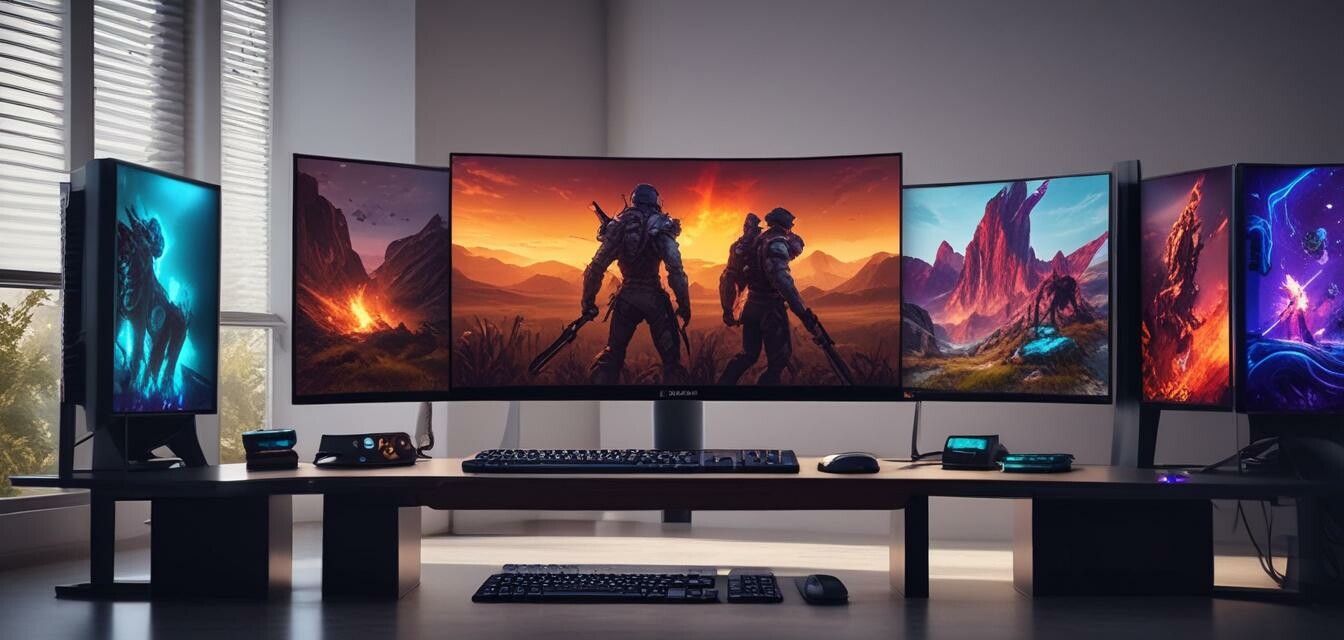
The Role of OLED in Building Competitive Gaming Setups
Key Takeaways
- OLED technology offers superior color accuracy and contrast, enhancing the gaming experience.
- Fast response times are critical in competitive gaming, and OLED monitors excel in this aspect.
- Adaptive sync technologies like G-Sync and FreeSync are vital, and many OLED monitors support these features.
- Adjusting settings for optimal performance can drastically improve player performance.
- Investing in a quality OLED monitor can be a game-changer for serious gamers.
In the competitive gaming landscape, every detail counts. From gaming hardware to software optimizations, players go to great lengths to ensure they remain at the top of their game. One technology that has emerged as a cornerstone of competitive setups is OLED. This article explores the significance of OLED technology in designing competitive gaming setups and its contributions to enhancing player performance.
Understanding OLED Technology
OLED stands for Organic Light Emitting Diode, a technology that enables screens to produce light independently for each pixel. This leads to remarkable advantages, particularly for gamers:
- Rich Colors: OLED monitors can achieve deeper blacks and more vibrant colors, which means that every game's visual experience comes to life.
- Wide Viewing Angles: The color and brightness remain consistent even from off-angles, ensuring that all players see the same high-quality image.
- Faster Refresh Rates: Many OLED displays now support refresh rates ideal for gaming, resulting in smoother gameplay and responsiveness.
The Importance of Response Times in Competitive Gaming
When it comes to gaming, every millisecond matters. OLED displays are renowned for their fast response times compared to traditional LCD monitors. This matters for several reasons:
- Reduced Motion Blur: Faster response times minimize motion blur, allowing players to track fast-moving action without losing clarity.
- Enhanced Precision: Quick pixel response means that your inputs are registered earlier, which can be crucial in fast-paced competitive games.
Adaptive Sync Technologies
In addition to their inherent advantages, many OLED monitors support adaptive sync technologies like G-Sync and FreeSync. These features reduce screen tearing and stuttering by synchronizing the display's refresh rate with the graphics card. This results in:
- Smoother graphics during gameplay.
- Fewer distractions caused by frame drops.
- Enhanced immersive experience, helping players stay engaged in their games.
Optimizing Your Gaming Setup with OLED
Having an OLED monitor is a significant step toward building a competitive gaming setup, but optimization is key. Here are some tips to get the most out of your OLED monitor:
Beginner tips for OLED gaming setup
- Adjust brightness and contrast settings according to your environment for the best viewing experience.
- Utilize game mode settings for optimal performance.
- Experiment with different refresh rates to find your sweet spot.
- Keep your monitor clean to avoid any visual obstructiveness that interferes with gameplay.
Future of OLED in Gaming
The future of OLED in gaming looks promising. With continuous technological advancements, we can expect even better performance and more innovative features. Developers are investing heavily in refining OLED technology, making it more accessible and affordable for gamers. Trends to watch for include:
- Increased availability of 4K OLED gaming monitors at competitive prices.
- Further integration of artificial intelligence into monitor settings for personalized gaming experiences.
- Improvements in energy efficiency, extending the life of the hardware without compromising performance.
Conclusion
As OLED technology continues to evolve, its significance in building competitive gaming setups becomes ever more apparent. From color accuracy to response times, OLED monitors contribute towards enhanced player performance and a more immersive experience. For serious gamers, investing in an OLED display is not just a luxury—it's a step toward improved competitiveness.
Pros
- Enhanced color accuracy and contrast improves visual experience.
- Fast response times lead to better gameplay.
- Support for adaptive sync technologies improves smoothness.
- Wide viewing angles contribute to a more immersive experience.
Cons
- Higher cost compared to traditional gaming monitors.
- Potential for burn-in with static images if not managed properly.
Explore More
Want to learn more about the latest trends in OLED gaming technology? Check out our other articles on News and Trends and discover how OLED continues to shape the gaming landscape. Don't miss our Buying Guides for expert tips on choosing the right gaming monitor for your setup!